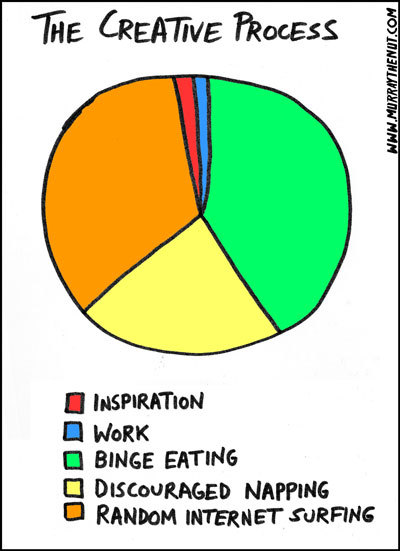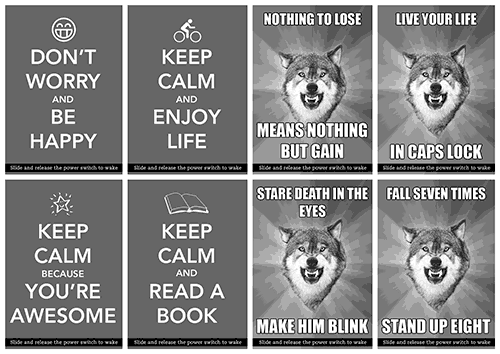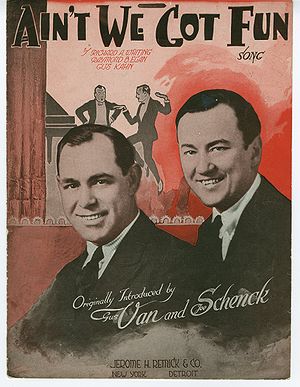Review: "The Writer's Tale: The Final Chapter"
Over the 2010 Christmas vac, I took six books with me but read only one: the 700-page The Writer's Tale: The Final Chapter. The book is a compilation of emails exchanged between Doctor Who producer/head-writer/show-runner Russell T. Davies -- the man we have to thank for the series' 2005 reboot and reimagining -- and Benjamin Cook, a young reporter for the Radio Times magazine and the monthly "Doctor Who Magazine." Cook initiated the exchange just before David Tennant's final season as the Doctor. The first email in the book, in fact, is Cook asking to do an article on the nuts and bolts of how a script is written, from inception to filming. Fortunately for us, Davies rather cheerfully and enthusiastically took the risk of exposing his process to Cook. That's an element of Davies' psychology that emerges throughout the book: he puts himself into uncomfortable places where he feels particularly vulnerable, though it scares him to death. I admire that a lot. But another less attractive aspect of his personality is that, once in those spaces, he squirms and fidgets and complains until he tires himself out and realizes that, well, this is where he chose to be.
Cook initiated the exchange just before David Tennant's final season as the Doctor. The first email in the book, in fact, is Cook asking to do an article on the nuts and bolts of how a script is written, from inception to filming. Fortunately for us, Davies rather cheerfully and enthusiastically took the risk of exposing his process to Cook. That's an element of Davies' psychology that emerges throughout the book: he puts himself into uncomfortable places where he feels particularly vulnerable, though it scares him to death. I admire that a lot. But another less attractive aspect of his personality is that, once in those spaces, he squirms and fidgets and complains until he tires himself out and realizes that, well, this is where he chose to be.
As Davies says elsewhere in the book, he'd never be able to write a proper, straightforward "here's how to write a script" manual. His process is too personal, interior, and -- to an uncomfortable, disquieting degree -- emotionally shredding. His emails are chatty, breezy, and one could have probably squeezed all the air out of those emails (especially the one-line bantering and texts between he and Cook) and shortened the book by a good 300 pages.
But I cared not! And I wanted more! I loved every page and lugged the book everywhere we went in Florida (despite its murderously block-like shape, the book is surprisingly lightweight). I loved the light and easygoing conversation between Cook and Davies that made me feel I'd stumbled on one of the great casual correspondences of all time. I read it before going to bed, on awakening, while everyone else napped, after everyone else went to bed. I had been steeping myself at the time in Tennant's run on the series via Netflix and various Doctor Who review sites and that was good prep for reading the book. My familiarity with the episodes made the behind-the-scenes, chaotic, mad energy of their creation -- how the scripts started out in a different place from where they finally ended, fixed in form forever -- all the more fascinating to me.
One of the book's threads is the progression of Cook and Davies' email relationship from that of observer and subject to confidantes and even collaborators. As the book progresses, Cook the observer texts Davies from the set or at some public event and lobs one or two questions without comment. As an observer, he explicitly starts out by not commenting on bits of script that Davies sends him, does not react as a fan, and does a good job of staying detached. But there are a few crucial points during specific episodes where Cook proffers advice and Davies actually listens.
One I remember is Cook urging Davies to not insert a cliffhanger in the final moments of "Journey's End" and instead to let Donna's absence have its time and weight with both the Doctor and the audience. I still can't quite believe Davies at first wanted to pull the emotional rug out from under the viewers by sticking to his adventure-serial template. But it's an indication of Davies' lack of ego when it comes to his writing that he considers the advice and realizes that the quieter moment would make a better story in the end.
And as their conversation progresses, we see Davies trusting Cook, asking him questions, getting his advice. Along the way, Davies doesn't shy away from the personal questions about his family, his relationships, the crushing demands of his job, and the fears and anxieties that knot his guts at 3 in the morning.
I found myself worrying about the poor man's health. The pressures and the pace of his business and public life, and the anxieties that hover over him every minute, mean that he gets hardly any rest, no vacations, and I'm sure he subsists on fast food and coffee. Add to this his chain-smoking as he writes a script and the terribly irregular hours he keeps, and you have someone who is rapidly burning himself out.
As for his writing process, we never really get to know the specifics of how Davies does what he does. As he explains in his first email, the entire process takes place in his head and he comments often that even if he knows what will happen later in the story, if he gets stuck on page 1, then he doesn't go past page 1 until the problem is solved. What does this tendency lead to? Procrastination. Of the worst kind. It's as if he wants the first draft to be his last draft. So while he doesn't describe the process of writing a script, what he describes in his emails to Cook is the process he puts his mind, body, and emotions though as he squeezes out yet another 10 pages before collapsing at 3 a.m. or sunrise.
Some of the book's most horrific passages to me include his self-laceration before the altar of his procrastination. He oftentimes doesn't start his script until well after it's due, and sometimes not even then. He is constantly terrified of the challenges that are set before him and that he sets before himself -- how do you whip up a galaxy-spanning story when you're dog-tired from rewriting other scripts, making decisions about what effects to cut from another script to meet the budget, and worrying about leaks to the press that will be badly managed by BBC Publicity?
He is blessed by having understanding producers who rearrange schedules and budgets so he can have the creative room to craft his story and script -- and still he procrastinates! Davies laments to Cook that the cast is off to watch a concert being given by a recent guest star on the show, yet he is stuck in Cardiff writing a script. On the side, he's also created a spin-off series called "Torchwood" and with other writers crafts a 5-part story that will air on 5 consecutive nights. He attends story meetings, they hash out the fates of certain characters -- and still he hasn't started writing his share of the scripts, which leaves the other writers having to write around him.
A Doctor Who Christmas story, "The Next Doctor," had a grand but rather weak ending. Davies writes on seeing the episode later that he knows now what the problem was and how to solve it, but of course it's too late. His procrastinatory writing style and the unbelievable pressures of being responsible for a multi-million pound franchise that employs hundreds of people in Cardiff take their toll.
As a writer, I was most interested in what he says he does and what he actually does. He says he hates writing treatments (a precis of the story's plot and themes) and yet proceeds to write treatments in his emails to Cook. And when he realizes that he's done so, he's surprised to find that he's solved a thorny story problem or gotten an idea that will spur the next burst of ideas and decisions. I wanted to ask Davies -- are you listening to yourself? Are you seeing what actually works for you?
Davies often has some poignant regrets and reflections on the way that "Doctor Who" chews up and devours his energy and ideas. I was not aware that Davies rewrote every script before he considered it good enough to pass along to the production crew. Oftentimes, the amount of work he put in would have earned him a co-writer's credit yet he refused to take on-screen credit for it. (This is probably why, even though the stories in the RTD era may have been uneven, the tone and voice of the show remained consistent throughout. By contrast, the Moffat era's stories have varied in both quality and tone.) So, in addition to the stories he is in charge of writing, he's also rewriting every script that he has commissioned from other writers. The Writer's Tale includes an example of a few pages of script submitted by another writer and then Davies' rewrite of the scene; it's fascinating to study. The information from the original script is there, but the patter between the Doctor and Donna in Davies' rewrite is more lively, energetic, and funny.
Steven Moffat has said that the writer must think about the big, action-packed movie idea he's been waiting years to write -- and that's a good place to start a Doctor Who story. Davies complains and rages that some of his best ideas, the ones he was saving for a miniseries or when he had more time to really develop them, have to be sacrificed to the merciless production schedule. Case in point: the dark "Turn Left," which supposes that the Doctor died and then all sorts of disasters happen to Earth that he could have prevented. The result is England as a police state -- an idea and image that Davies wanted to address as a subject on its own. Instead, due to production mishaps (including his own procrastination), he has to sacrifice a cherished idea to be a subplot on a Doctor Who story. He bridles and kicks and screams about the unfairness of it all and it kills him to know that he has no alternatives. The story needs to be written. He has no other ideas, or no other ideas that will work. And the show must go on.
Another worry he has -- and a legitimate one, I think -- is his fear that his time on Doctor Who will leave him so changed that he can't anymore write scripts about two people simply sitting in a kitchen and talking. Davies made his name writing comedy and drama, not science fiction (even though he had been a Doctor Who fan all his life), with two shows in particular that brought him to the public's attention: "Queer as Folk," about the lives of three gay man in Manchester, and "Bob & Rose," about a love affair between a gay man and a straight woman. These are real people in the everyday world, free of genre considerations. But will he be able to go back? Since leaving Doctor Who in 2010, he helped write and produce another "Torchwood" mini-series and is planning a series called "Wizards vs. Aliens."
Throughout the book, and as evidenced by his long, funny, chatty, gossipy emails, Davies lives the life of a working writer. That's what I most admire -- he is not precious about the writing process or about the profession. Writing is a job and the writer shows up to do his job -- end of story (so to speak). He knew he was in charge of a show that consumed an enormous amount of public money, and he was zealous in ensuring the public got its money's worth. While he has a generous spirit and seems to be a genuinely nice man, I have no doubt he could be maddening to work with and could be cold in dealing with personnel or other issues that would affect the show's quality.
I am hoping someone is planning to do a similar book with The Moff! And if they don't, that's OK. For me, The Writer's Tale is a book so big and so rich that I will happily re-read it every Christmas.



















